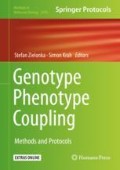Abstract
VNAR domains are the binding regions of new antigen receptor proteins (IgNAR) which are unique to sharks, skates, and rays (Elasmobranchii). Individual VNAR domains can bind antigens independently and are the smallest reported adaptive immune recognition entities in the vertebrate kingdom. Sharing limited sequence homology with human immunoglobulin domains, their development and use as biotherapeutic agents require that they be humanized to minimize their potential immunogenicity. Efforts to humanize a human serum albumin (HSA)-specific VNAR, E06, resulted in protein molecules that initially had undesirable biophysical properties or reduced affinity for cognate antigen. Two lead humanized anti-HSA clones, v1.10 and v2.4, were subjected to a process of random mutagenesis using error-prone PCR. The mutated sequences for each humanized VNAR variant were screened for improvements in affinity for HSA and biophysical properties, achieved without a predicted increase in overall immunogenicity.
Access this chapter
Tax calculation will be finalised at checkout
Purchases are for personal use only
References
Smith GP (1985) Filamentous fusion phage: novel expression vectors that display cloned antigens on the virion surface. Science 228(4705):1315–1317
Scott JK, Smith GP (1990) Searching for peptide ligands with an epitope library. Science 249(4967):386–390
McCafferty J, Griffiths AD, Winter G et al (1990) Phage antibodies: filamentous phage displaying antibody variable domains. Nature 348(6301):552
Lowman HB, Bass SH, Simpson N et al (1991) Selecting high-affinity binding proteins by monovalent phage display. Biochemistry 30(45):10832–10838
Cadwell RC, Joyce GF (1992) Randomization of genes by PCR mutagenesis. PCR Methods Appl 2(1):28–33
Cirino PC, Mayer KM, Umeno D (2003) Generating mutant libraries using error-prone PCR. In: Anonymous directed evolution library creation. Springer, New York, pp 3–9
Gram H, Marconi LA, Barbas CF 3rd et al (1992) In vitro selection and affinity maturation of antibodies from a naive combinatorial immunoglobulin library. Proc Natl Acad Sci U S A 89(8):3576–3580
Deng SJ, MacKenzie CR, Sadowska J et al (1994) Selection of antibody single-chain variable fragments with improved carbohydrate binding by phage display. J Biol Chem 269(13):9533–9538
Stephens DE, Singh S, Permaul K (2009) Error-prone PCR of a fungal xylanase for improvement of its alkaline and thermal stability. FEMS Microbiol Lett 293(1):42–47
Malm M, Kronqvist N, Lindberg H et al (2013) Inhibiting HER3-mediated tumor cell growth with affibody molecules engineered to low picomolar affinity by position-directed error-prone PCR-like diversification. PLoS One 8(5):e62791
Zhao N, Schmitt MA, Fisk JD (2016) Phage display selection of tight specific binding variants from a Hyperthermostable Sso7d scaffold protein library. FEBS J 283(7):1351–1367
Zahnd C, Spinelli S, Luginbuhl B et al (2004) Directed in vitro evolution and crystallographic analysis of a peptide-binding single chain antibody fragment (scFv) with low picomolar affinity. J Biol Chem 279(18):18870–18877. https://doi.org/10.1074/jbc.M309169200
Ye J, Wen F, Xu Y et al (2015) Error-prone pcr-based mutagenesis strategy for rapidly generating high-yield influenza vaccine candidates. Virology 482:234–243
Reichert JM (2017) Antibodies to watch in 2017. In: Anonymous MAbs, vol 9. Taylor & Francis, Milton Park, Didcot, p 167
Ian L (2017) Pharma R&D Annual Review. Informa UK Ltd Mortimer House, 37-41 Mortimer Street, London W1T3JH, UK
Hey T, Fiedler E, Rudolph R et al (2005) Artificial, non-antibody binding proteins for pharmaceutical and industrial applications. Trends Biotechnol 23(10):514–522
Gebauer M, Skerra A (2009) Engineered protein scaffolds as next-generation antibody therapeutics. Curr Opin Chem Biol 13(3):245–255
Muyldermans S (2013) Nanobodies: natural single-domain antibodies. Annu Rev Biochem 82:775–797
Kovaleva M, Ferguson L, Steven J et al (2014) Shark variable new antigen receptor biologics–a novel technology platform for therapeutic drug development. Expert Opin Biol Ther 14(10):1527–1539
Kovalenko OV, Olland A, Piche-Nicholas N et al (2013) Atypical antigen recognition mode of a shark immunoglobulin new antigen receptor (IgNAR) variable domain characterized by humanization and structural analysis. J Biol Chem 288(24):17408–17419. https://doi.org/10.1074/jbc.M112.435289
Dooley H, Flajnik MF, Porter AJ (2003) Selection and characterization of naturally occurring single-domain (IgNAR) antibody fragments from immunized sharks by phage display. Mol Immunol 40(1):25–33
Finlay WJ, Cunningham O, Lambert MA et al (2009) Affinity maturation of a humanized rat antibody for anti-RAGE therapy: comprehensive mutagenesis reveals a high level of mutational plasticity both inside and outside the complementarity-determining regions. J Mol Biol 388(3):541–558
Winter G, Griffiths AD, Hawkins RE et al (1994) Making antibodies by phage display technology. Annu Rev Immunol 12(1):433–455
Griffiths AD, Williams SC, Hartley O et al (1994) Isolation of high affinity human antibodies directly from large synthetic repertoires. EMBO J 13(14):3245–3260
Hawkins RE, Russell SJ, Winter G (1992) Selection of phage antibodies by binding affinity: mimicking affinity maturation. J Mol Biol 226(3):889–896
Marks JD, Hoogenboom HR, Bonnert TP et al (1991) By-passing immunization: human antibodies from V-gene libraries displayed on phage. J Mol Biol 222(3):581–597
Steven J, Müller MR, Carvalho MF et al (2017) In vitro maturation of a humanized shark Vnar domain to improve its biophysical properties to facilitate clinical development. Front Immunol 8:1361
Author information
Authors and Affiliations
Corresponding author
Editor information
Editors and Affiliations
Rights and permissions
Copyright information
© 2020 Springer Science+Business Media, LLC, part of Springer Nature
About this protocol
Cite this protocol
Steven, J. et al. (2020). In Vitro Maturation of a Humanized Shark VNAR Domain to Improve Its Biophysical Properties. In: Zielonka, S., Krah, S. (eds) Genotype Phenotype Coupling. Methods in Molecular Biology, vol 2070. Humana, New York, NY. https://doi.org/10.1007/978-1-4939-9853-1_7
Download citation
DOI: https://doi.org/10.1007/978-1-4939-9853-1_7
Published:
Publisher Name: Humana, New York, NY
Print ISBN: 978-1-4939-9852-4
Online ISBN: 978-1-4939-9853-1
eBook Packages: Springer Protocols

